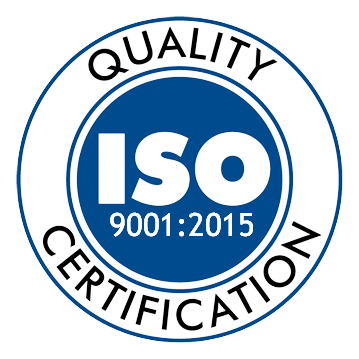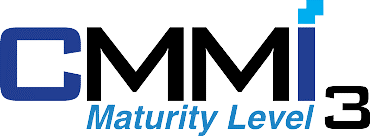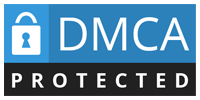A practice is common in many businesses is reported business results shows positive returns, revenue growth is good, but business fell into the situation of not enough money to pay salaries, pay suppliers or maintain the operating cost base. What is the reason? Not because they don't know money, but because they are not well managed cash flow from operating activities – cash flow really is created from the production operation, the core business of the enterprise.
This article is Lac Viet Computing built to help enterprise organizations understand the nature of cash flow from business activities, know how to set up analytics correctly at the same time given the direction of improving practice to improve the efficiency of financial management. Whether you're a manager, hr, financial or business owner, the catch right enough about the cash flow business will help you be more active in every decision from investment spending to control financial risks in the future.
1. Cash flow from business operations what is?
1.1. Definitions easy to understand and distinguish with cash flow other
Cash flow from business operations is the cash flow arising from the main activities generate revenue's business includes the money received from the customer, the costs for the commissioning process as pay employee wages, cost of materials, cost of rent, taxes and other expenses related to production activities business daily.
In other words, this is the cash flow reflects the capacity of operating the core of the business. Businesses can invest, loans or issuing shares to get more money, but if not, generate positive cash flow from business activities, it is very difficult to maintain long-term stability.
Illustrative example: A retail business received 300 million from the sale of goods in year 6, at the same time spend 200 million to pay salaries and rent. Meanwhile, cash flow from business operations of the enterprise is around 100 million. This is a positive signal for businesses not only generate revenue but also to cash from your main activity.
Distinguished with the type of cash flow other:
- Cash flows from investing activities: including purchase and sale of fixed assets, investments in other companies, for long-term loans... For example: spend 1 billion purchase of machinery or collect 500 million from the sale of an old property.
- Cash flows from financing activities: Related to the loans, the loan repayment, issuance of shares, dividend... For example: get 2 billion from the bank or loan repayment 800 million.
The separate clearly the three types of cash flow help businesses understand the exact origin purpose of each account, the money from which financial decisions more rational.
1.2. Why cash flow from operating activities is the most important?
In three groups, cash flow, cash flow from business activity is considered the most important because it expresses the ability to “live feed” of business, i.e. the business is generating enough money to maintain day to day activities without dependence on debt or sell assets.
A profitable business accounting cock, but cash flow business in more consecutive periods are warning signs can revenue recognition has not obtained the money, debts and customers a high-rise or business are consuming too much operating costs.
Enterprise value received from the control the flow of money, good business:
- Proactive and timely payment of accounts wages, taxes, supplier without the need to manage financial.
- Increase the power to negotiate with the bank/partner because of the proven capacity, stable operation by line real money.
- To reduce dependence on loans from which reduce the cost of interest on loans, financial risk, long-term.
- Out decision at the right time when there is cash flow in excess: expand production, investment, increase the discount to boost consumption...
In the eyes of investors and credit institutions, a business has the cash flow business is stable, continuous positive is that businesses have “the financial resources, strong” much more reliable than just the amount of profit on paper.
Understanding the importance of cash flow from business activities not only help business “healthy living” in the present but also have the capacity for sustainable development in the future. This is the first indicator that any manager, audit or financial partner, which is also of interest also is the index business need to know it for sure if you want to operate your privacy in an efficient way.
- 9 Accounting Software online cheap cost reduction for small and medium ENTERPRISES
- 10+ accounting software ERP admin most popular AI for enterprises
- Reported cash flow is what? How to set, read excel file standard with professional template
- Cash flow is what? 5 principles of management business cash flow effectively
2. Component cash flow from business operations
Cash flow from operating activities reflects the entire line amount actually incurred during the operation of the business. To understand the nature for better control, enterprises need to master three key components: money in, money out, and the account adjusted non-cash (in the case of indirect method).
2.1. Cash in: The revenues from business activities
This is the cash flow business is actually about from operations revenue-generating core. Includes:
- Collect money, sales service provider: This is the money that arise when customers pay for products or services. The recognition of this need to reflect the right time cash is received, not when the bill is.
- Debt collection: includes proceeds from customers who have purchased subject earlier. Close monitoring of this group is to help businesses assess the effect recovery of debts and avoid falling into the state revenue “on paper” but no cash.
- Other revenues from main activity: As collect from the penalty contract, refund purchase cost or earnings related to the production of the main business (for example tax refund input VAT directly related to the goods sold).
Good management revenues from business operations to help businesses ensure liquidity reduce dependence on borrowed funds, the initiative is cash flow daily. This is also the basis to build the planned spending, purchasing, recruitment in accordance with the financial capacity real.
2.2. Money: expenses for business operation
Is the cash flow going out to serve for the costs necessary to maintain business operations. Includes:
- The cost of buying goods, raw materials: spending for supplier input. Controlling billing cycle, negotiating terms deferred reasonable will help balance your cash flow more effectively.
- Personnel costs/administrative: include payment of wages, bonuses, social insurance contributions, the cost of office rent, electricity, water, and software, cost of stationery... This is the group incurred costs usually states, may be forecast to plan cash flow active.
- Other operating expenses: such As marketing, transportation, equipment maintenance or outsource services. Though not fixed but this is the group costs have a significant effect to cash flow if not managed closely.
Businesses can use to report cash flow to closely monitor speed “burning money” from that decision cost reduction, deferral of expenses not necessary or restructuring process to optimize cost.
2.3. The adjustments for non-cash (in indirect method)
When reporting cash flows using the indirect method, businesses need to start from the accounting profit and adjusted the account not related to cash, to reflect a realistic cash-flow. Includes:
- Depreciation fixed assets: Is the cost accounting but does not reduce the actual cash. Business need to back depreciation in cash flow from business operations.
- The room (bad debts, discounts, inventory...): Reserve is set aside to reflect the potential risks, but does not change the cash at the present time.
- Variances exchange rate has not taken: What's the difference due to the revaluation of foreign currency balances do not change the cash flows in the states need to re-adjust to the right.
Fluctuations in inventory and the public debt:
- Increase inventory: Is money out because of business spend money to import goods not yet sold.
- Reduce inventory: Is money in because have sales on it.
- Increase the debt to income: Have revenue but hasn collect money → need to subtract out.
- Increase accounts payable: Purchase but not yet paid for → temporarily considered as increase cash flow.
The adjustment of the right elements, non-cash will help the business understand the difference between accounting profits and cash flow, from which a glimpse of health financial solvency in the states.
3. How to set up and analyze cash flow from business operations
Reporting cash flows from business activities not only aims to improve the financial statements, which is also important tools to help businesses look back the ability to generate cash from core operations. There are two methods commonly used are the direct method and the indirect method. Each method in accordance with a target using different bring own value for managers.
3.1. Establishment under the direct method, easy to understand, practical observation
The method directly reflect each item of income and expenditure actual cash in the period from business activities. The report is presented in the form of streams of – genus-specific, such as:
- Proceeds from the sale service provider
- Cash paid to suppliers
- Money to pay wages, taxes, operating costs
Advantages of this method:
- Easy to understand: Even people who don't specialize in financial well can read to understand the report.
- Accurately reflect the cash flow actually helps administrators make decisions based on cash flow facts, not the numbers accounting.
- In accordance with cash flow management, short-term: Very helpful with the small and medium enterprises would like to monitor cash flow on a daily, weekly.
For example, If in month business collected about 800 million from sales, expenses 300 million imported raw material, 200 million payroll and $ 100 million for other costs, then the net cash from operating activities is 800 – 300 – 200 – 100 = 200 million.
However, this method requires businesses have systems recorded revenues – cash expenses, get rid of, otherwise will take more time to aggregate the data.
3.2. Set up under the indirect method in accordance with financial accounting
The indirect method starts from the accounting profit after tax, then adjust the account is not really related to cash flow to find out the cash flow from business operations. The adjusted common include:
- Plus the cost of non-cash items such as depreciation, reserve
- Except out of the revenues not collect the money (increase the debt to income)
- Plus expenses not to spend money (increase in accounts payable)
Advantages of this method:
- Closely associated with reporting business results to help audit, tax authorities and investors to easily collate data.
- Fit big business need to set up financial statements according to accounting standards.
For example, Businesses can profit after tax is 500 million, depreciation of fixed assets 100 million, receivables increased by 150 million, accounts payable increased by 50 million, then:
Cash flow from HĐKD = 500 + 100 – 150 + 50 = 500 million
However, indirect methods do not directly reflect each item of income and expenditure, but help assess business performance, combined with the impact to cash flow is particularly useful when analyzing the indicators of financial performance.
3.3. Analysis of assessment results
Reporting cash flow is the first step, analysis of new results is the decision value application of this report in business management.
Positive cash flow is good signal, but not enough. Business need:
- Compare cash flow with profit revenue: If profit is positive but negative cash flow constant, can business is recorded sales “virtual” for example customer has not paid yet.
- Consider cash flow, pussy stretch: If cash flows from business activities in many states, businesses may be dependent on debt or losing money too fast for operating costs.
- Trend analysis cash flow through several states: Not only view your current business should look at the overall 6-12 months to see the trend of improvement or worsening of cash flow to help prepare the script response: acceleration, debt collection, cost control or adjust plans to expand.
Through the analysis of cash flow from business operations, businesses can enhance the capacity of financial control, reducing reliance capital loan to take investment decisions or cost reduction more accurate.
4. How to improve cash flow from business operations
Maintaining cash flow from business operations at a stable level is a prerequisite for business can self-finance, discount depends on the source of external capital raising capacity to survive ago fluctuations. Here are three directions to improve critical that any business can also deploy flexible, in accordance with the scale industry of yourself.
4.1. Optimal rotation liabilities
One of the causes that cash flow obstruction is the process of collecting money more slowly than spend money. The optimal rotation debt, is the solution to help enterprises shorten the transfer time from revenue recorded the amount actually collected.
- Shortening of the acquisition time money customers: Enterprises can accelerate the process of recovery of the debt by applying the policy early payment discount, send reminders, debt of the states or require a deposit before a part of the contract value. Particularly effective with the contract value or the prolonged term.
- Negotiations extend the time of payment for providers: while pushing the quick collect money, businesses should also work with suppliers to stretch time payment that does not affect the partnership helps create latency reasonable in the cycle, cash flow, to help businesses keep cash longer to serve the expense of other important.
4.2. Control inventory and operating costs
Inventory stagnant and the cost of operation no control over is two “the leak” cash flows, the largest of which many businesses often overlook.
- Avoid inventory stagnant: inventory too much not only increases the costs of storage, preservation, but also makes the capital were “detained”. Business should build the inventory level optimization, combined with forecast demand accurately to enter only when really necessary.
- Increase the efficient use of personnel costs, office: optimized hr is not synonymous with massively cut that is rearrange work according to productivity, leverage technology to automate the task craft time-consuming. Along with that, businesses should review the operating costs fixed to remove the account no longer worth using.
4.3. Planning cash flow week by week/month
No plans, all efforts to improve cash flows are inefficient. The construction plan cash flow help businesses proactively identify early the time of deficiencies from which preventive action.
- Use Excel or software cash flow management: Depending on the internal capacity, the business can start from a template Excel basic but should proceed to use the software integrates to report news time, avoid errors crafts.
- Active before the cycle big payoff: As states pay wages, pay taxes, repayment of the loan... The plan can help the business ensure sufficient funds at each point of time, to avoid having to manage in the passive.
5. Suggestion tool flow management money smart for business
Although Excel is a convenient tool to start but when the scale of operation increases, the management of cash flow on a spreadsheet crafts easy to fall into the condition:
- Easy wrong formula, teen, data links, resulting report does not reflect the true financial reality.
- Lack of early warning that business only know his “thirst money” when it was too late.
- Does not integrate with accounting systems, banking, sales leads to the synthesis of data is discrete, time-consuming easy to miss.
To overcome the limitations mentioned above, businesses can consider using solution Financial AI Agent of Lac Viet app artificial intelligence to help businesses automate the process monitor, analyze, optimize cash flow.
Lac Viet Financial AI Agent to solve the “anxieties” of the business
For the accounting department:
- Reduce workload and handle end report states such as summarizing, tax settlement, budgeting.
- Automatically generate reports, cash flow, debt collection, financial statements, details in short time.
For leaders:
- Provide financial picture comprehensive, real-time, to help a decision quickly.
- Support troubleshooting instant on the financial indicators, providing forecast financial strategy without waiting from the related department.
- Warning of financial risks, suggesting solutions to optimize resources.
Financial AI Agent of Lac Viet is not only a tool of financial analysis that is also a smart assistant, help businesses understand management “health” finance in a comprehensive manner. With the possibility of automation, in-depth analysis, update real-time, this is the ideal solution to the Vietnam business process optimization, financial management, strengthen competitive advantage in the market.
SIGN UP CONSULTATION AND DEMO
Some feature highlights:
- Automatic synthesis of cash flow from multiple sources: accounting (AccNet), banking system, sales, contract...
- Analysis and forecast cash flow in real time to help early detection of the risk of shortage of funds in the near future.
- Smart alert when negative cash flow, prolonged or unusual fluctuations.
- Proposed action adjusted as relax costs, increase debt recovery, postpone investment.
See the demo system details, financial analysis ONE from Vietnam in:
https://lacviet.vn/lac-viet-financial-ai-agent
Cash flow from business operations is not just a norm accounting but also is a measure of financial health, really, of a business. While profit can come from the account recorded in accounting, the cash flow is real money, is the survival business every day. The good control of cash flow, this helps enterprises proactively payments, maintain stable operation, improve the ability to negotiate financial and solid than before market volatility.














